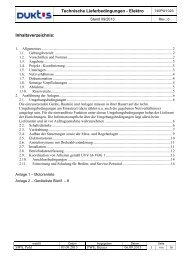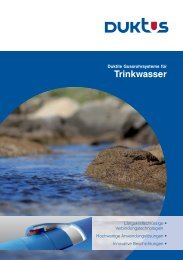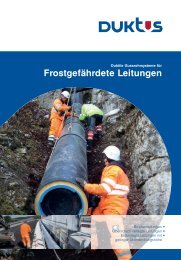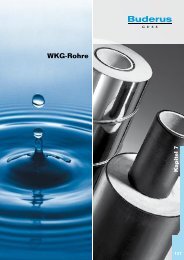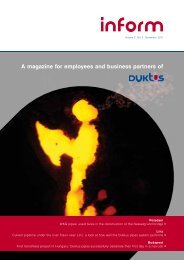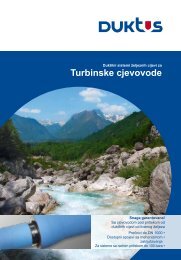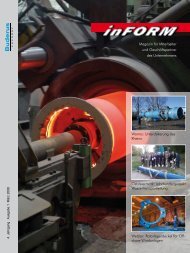Buderus Manual on Trenchless Installation of Ductile Cast ... - Duktus
Buderus Manual on Trenchless Installation of Ductile Cast ... - Duktus
Buderus Manual on Trenchless Installation of Ductile Cast ... - Duktus
You also want an ePaper? Increase the reach of your titles
YUMPU automatically turns print PDFs into web optimized ePapers that Google loves.
2.3 Development in the joint-making techniques<br />
When cast ir<strong>on</strong> pipes first began to be used, <strong>on</strong>e <strong>of</strong> the primary c<strong>on</strong>cerns was sealing<br />
the individual butt joints between the pipes. In 172 , Jacob Leupold had already<br />
described in his book [2.3] a mixture <strong>of</strong> various powders and substances c<strong>on</strong>taining<br />
organic c<strong>on</strong>stituents to produce a sort <strong>of</strong> putty that was halfway elastic.<br />
Fig. 2.13<br />
Development in the joint-making techniques<br />
In the period which saw the growth<br />
<strong>of</strong> centralised systems <strong>of</strong> water supply<br />
(18 0-1930), the cast ir<strong>on</strong> pipes were fitted<br />
with a socket that had to be packed;<br />
it was sealed with tarred hanks <strong>of</strong> hemp<br />
and poured lead (Fig. 2.13). When they<br />
are being made, joints made with packed<br />
sockets call for great skill and reliability <strong>on</strong><br />
the part <strong>of</strong> the fitters doing the job. Because<br />
the sealing material is very inelastic,<br />
Fig. 2.14<br />
the joint must not be subject to any movements.<br />
Bedding which will not be disturbed and support for the pipe which does not<br />
allow any movement are essential for l<strong>on</strong>g-term freedom from leaks.<br />
Rolling ring seals made <strong>of</strong> rubber were initially introduced for gas pipes in 18 0 and<br />
from 18 3 <strong>on</strong> they came into use for water pipes. As from 1910 there were some initial<br />
trial pipes in Stuttgart which used a precursor <strong>of</strong> the screw-gland socket joint but the<br />
advantages <strong>of</strong> this joint were not appreciated for the time being. It <strong>on</strong>ly made its real<br />
breakthrough in the early 1930‘s (Fig. 2.1 ) and in doing so it represented a milest<strong>on</strong>e<br />
in pipe-laying in that since then the elasticity <strong>of</strong> seals <strong>of</strong> vulcanised rubber has allowed<br />
joints to move to a certain degree.<br />
1



